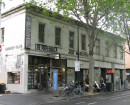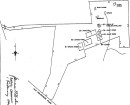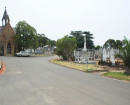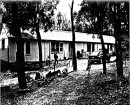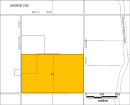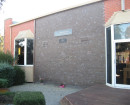Former Mont Park Hospital
ERNEST JONES DRIVE and SPRINGTHORPE BOULEVARD and CHERRY STREET MACLEOD, Darebin City
-
Add to tour
You must log in to do that.
-
Share
-
Shortlist place
You must log in to do that.
- Download report
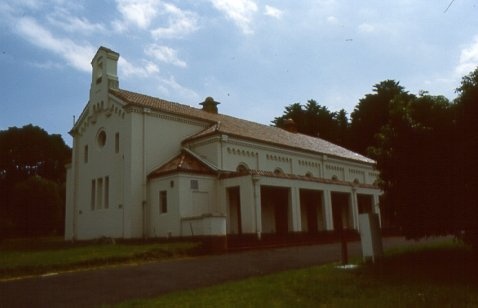

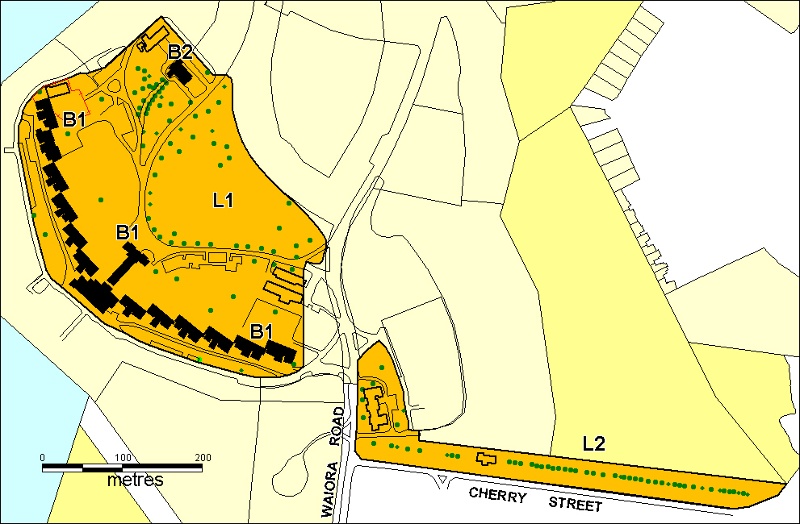
Statement of Significance
The former Mont Park/Bundoora Psychiatric and Repatriation Hospitals Complex consisted of seven hospitals on a site of 185 hectares. The site comprising the Mont Park and Strathallen estates was consolidated by the Victorian government by purchase and transfer from the Closer Settlement Board in 1909 . The Mont Park Hospital commenced in 1910 with the building of the Farm Workers Block (later part of Kingsbury Training Centre). In 1912 the landscape gardener Hugh Linaker was employed to layout the grounds of Mont Park and other State mental hospitals. The other hospitals were gradually split off from the Mont Park administration to form separate entities. These were the Macleod Repatriation Hospital (1915), the Bundoora Repatriation Hospital (1920), the Gresswell Sanatorium (1933), Larundel Mental Hospital (1938 opened 1951), the Plenty Mental Hospital (1963) and the Kingsbury Training Centre (1974). The site under consideration consists of the former Mont Park and Plenty Hospitals.
An agreement was made with the Defence Department in 1914 for the latter to erect the Mont Park central block (the "Chronic Wards") for use as a Military Hospital, and for it later to revert to the State as portion of Mont Park Hospital. The buildings now known as the Chronic Wards were completed in this way in 1916 and used as the Australian General Hospital no. 16 for the duration of the war. One wing of this building was set aside for mental patients during this period.
The Military Mental Hospital was built in 1919 to accommodate 84 patients who were suffering from psychiatric conditions as a result of their service in World War I. It was occupied by military patients until 1933 when they were transferred to Commonwealth facilities. The Military Mental Hospital consisted of a two storey brick Administration Building with two single-storey pavilion wards and a single-storey kitchen-dining room pavilion at the rear, connected with covered ways. The ward sections of the Military Mental Hospital have undergone considerable alteration. A two-storey brick building was constructed in the 1970s in front of the Administration Block and attached to it at the central porch.
The Ernest Jones Hall, named after the Inspector General of the Victorian Lunacy Department, was a combined chapel and entertainment hall constructed 1927-1930 in the Spanish Mission style.
The Avenue of Honour planted in 1919 consists of a row of 46 Sugar Gums planted by returned soldiers who were hospitalized in the number 16 Australian General Hospital (Chronic Wards) at Mont Park. Further plantings were made after World War II.
How is it significant?
The Former Mont Park Hospital is of architectural, historical, aesthetic, scientific (horticultural) and social significance to the State of Victoria.
Why is it significant?
The Former Mont Park Hospital is architecturally significant as a representative example of asylum design in the early twentieth century. The Ernest Jones Hall, Mont Park is a rare example of an asylum chapel/hall in Victoria. The Chronic Ward Block is a rare example of en echelon pavilion hospital ward design.
The Former Mont Park Hospital is historically significant in demonstrating changing responses to twentieth century health needs and particularly mental illness in the planning and development of psychiatric institutions and repatriation hospital complexes on the site. The Administration Building of the Military Mental Hospital (1919, demolished) is historically significant as part of the only surviving purpose-built mental hospital in the State constructed to accommodate psychological casualties after World War I. The construction of the separate Military Mental Hospital was in response to pressure from returned servicemen's organisations to protect shell-shocked patients from the stigma of mental illness by removing them from the general psychiatric patient population in Mont Park. Although the wards of the Military Mental Hospital were similar to other psychiatric accommodation of the period, the construction and siting of the Hospital and the provision of a separate Administration Block testified to attitudes to military psychiatric patients in the immediate post-war period.
The Chronic Wards Block is historically significant as demonstrating the response of the Victorian government to the requirements of the war effort during World War I in that the buildings intended for the care of the mentally ill were handed over for use as hospital facilities for the Australian Army for the duration of the war with one wing devoted to the care of military psychiatric patients.
The landscape design of the Former Mont Park Hospital is historically significant, owing much to early twentieth century ideas about the treatment and care of the mentally ill who were believed to benefit from a rural or natural environment. The designed landscape is of historical and aesthetic significance as an early example of the prominent landscape designer, Hugh Linaker. Linaker was one of the most significant landscape designers in Victoria in the early 20th century and Mont Park is his first and an important example of his landscape style, mixing exotics and native trees and contrasting forms especially narrow crowned and fastigiate forms and palms. These were often planted in alternative arrangements in the landscape to give a striking and contrasting image. At Mont Park this is achieved by the extensive use of conifers (Pinus, Cedrus, Cupressus, Chamaecyparis, Juniperus, Sequoia, Taxodium, Agathis), palms (Phoenix, Washingtonia, Chamaerops, Trachycarpus), narrow forms and mixed foliage colour of the dark green, Cupressus macrocarpa 'Fastigiata', Cupressus sempervirens, Cupressus sempervirens 'Stricta', lime green foliage of Cupressus torulosa, and the blue foliage of Cupressus glabra 'Hodginsii'. The landscape is further enhanced by the juxtaposition of Golden Cypress (Cupressus macrocarpa 'Saligna Aurea', Cupressus macrocarpa 'Aurea') and the dark green Monterey Cypress (Cupressus macrocarpa) and Pines (Pinus radiata, Pinus canariensis, Pinus halepensis) and deciduous elms (Ulmus procera) and oaks (Quercus robur, Q.cerris, Q. canariensis, Q. acutissima) planted in the indigenous Yellow Box (Eucalyptus melliodora) and River Red Gum (Eucalyptus camaldulensis) woodland. One River Red Gum (T13A) on the west side is exceptionally large and old, and this gnarled tree is of high landscape value.
The extensive use of narrow and fastigiate plants and contrasting foliage colour seen at Mont Park has no other comparison in Victoria. Linaker achieved this vertical landscape feature at the Shrine of Remembrance by the use of Populus nigra 'Italica', Cupressus torulosa, and Agathis robusta. At Buchan Caves, Populus nigra 'Italica', Cupressus torulosa and Sequoia sempervirens was planted and at Princess Park, Maryborough, Linaker may have been responsible for the planting of Populus alba 'Pyramidalis'.
The Avenue of Honour planted in 1919 is historically, socially and aesthetically significant as an unusual example of an avenue of honour planted by returned soldiers to commemorate soldiers who fought in World War I. This avenue is unusual in that Australian natives were used rather than the more common First World War plantings of elms and oaks.
A number of trees on the Former Mont Park Hospital site are of scientific (horticultural) significance, such as the Schinus lentiscifolia, a species rarely grown in Victoria, (and Australia). The Mont Park specimen is the largest and of an outstanding form. The only others are three poorer quality trees in the Royal Botanic Gardens. There is a large and outstanding example of Cedrus atlantica, a species rarely grown in Victoria, and four outstanding specimens of Cupressus macrocarpa ' Aurea' clone which displays a compact crown and deep yellow foliage, is unknown elsewhere in Victoria. Other trees rarely grown in Victoria are Pinus sylvestris, Pinus contorta, Bauhinia ?monandra and Taxodium distichum. The Cupressus macrocarpa 'Saligna Aurea' are uncommon in Victoria and these trees are amongst the finest in the State, the only comparable trees occurring at Werribee Park, Footscray Park, Caulfield Park, Bendigo Hospital, Royal Botanic Gardens and Melbourne General Cemetery. The Cupressus macrocarpa 'Saligna Aurea' (c1900-20) and Cupressus glabra 'Hodginsii' (c1936) are also of horticultural importance as both are cultivars selected by the Victorian Hodgins nursery in the early 20th century.
-
-
Former Mont Park Hospital - Physical Description 1
Beginning in 1910 with the Farm Workers Buildings, the Hospital for the Insane at Mont Park developed without a master plan, with decisions on the siting of buildings made for practical reasons such as ease of construction. The buildings of the original phase of development at Mont Park were scattered on the site, although the landscaping of the central parkland provided an informal "village green" atmosphere for some of the buildings near the Waiora Road entrance. The siting of the chapel/ recreation hall and the kiosk in the late 1930s on the edge of the central park reinforced this.
The elements which distinguish Mont Park from other large Victorian asylums are its move away from the formal planning of the nineteenth century institutions at Kew, Ararat and Beechworth and later at Sunbury, its dispersal of buildings on a large site in a largely haphazard fashion, and its placing of the freestanding chapel-recreation hall and the kiosk at the edge of the central park. Formal planning of individual groups of buildings existed at Mont Park but the separate groups bear little relationship to one another. This dispersal and lack of unity made possible the development of separate institutions to accommodate different needs in health care in the course of the century.
The Chronic Wards at Mont Park, constructed between 1914 and 1916 were designed as a series of interconnected pavilion blocks sited to take advantage of sunlight and ventilation and to provide efficient means of circulation for staff. The functional planning of these wards reflected current hospital planning concepts. They are symmetrically planned in a tightly-organised zig-zag pattern around a central administration block which provided a focus for the group. A curved rear roadway provided service access. Their relationship to the landscape is quite different from the formal garden landscaping in front of the Administration buildings at Caloola and Kew (Willsmere) in that the front was approached by a roadway enclosing the central park/ village green.
1919 Military Mental Hospital
The Military Mental Hospital was built in early 1919 to house ex-servicemen with severe war neuroses. The Military Mental Hospital (1919) is a Federation style building in red brick and render with a Marseilles tile roof. It consisted of two single storey dormitory wards and a central dining room/kitchen behind a two-storey Administration Building with leadlight windows. The pavilion buildings were linked by covered ways.The wards have rear verandahs facing over the airing courts. Its siting at the north end of Mont Park set it apart from the rest of the institution, providing patients and visitors with some sense of privacy. Additions were made in 1924 of seven single bedrooms at each end of the wards. In 1933 the building was converted into a Female Receiving Ward with single storey infill additions to its wards. A two storey brick building (Plenty Building no.1 ) was placed directly in front of the Administration building in the 1970s, replacing its central porch with a connecting link between the two buildings.
.
1927-30 Ernest Jones Chapel and Hall/ Entertainment Hall
The Ernest Jones Chapel and Hall was designed in the Spanish Mission style with rendered brick wall surfaces, cordova tile roof and a gable with a bellcote. The interior consists of a hall with male and female dressingrooms on either side of the stage at the western end, a notable curved ceiling and a level rather than a raked floor so as to allow for various uses such as dances, concerts and religious services. A bio-box for the projection of moving pictures was provided. The former altar space at the eastern end has been converted to toilet facilities. The building is a rare example of a Spanish Mission style church and a substantially intact example of a combined entertainment hall and chapel in a psychiatric institution. Its siting as a freestanding building to serve a large institution housed in a number of buildings scattered across an extensive site reflects the changes in institutional design to reflect early twentieth century practices in the care of the mentally ill. The combination of recreation and religious use reflects the more secular tendencies of the twentieth century. Nineteenth century asylums in England were generally served by single-use chapel buildings often included under the main roof of the institution. The freestanding chapel/hall was more suitable to the estate atmosphere of twentieth century psychiatric hospitals with buildings scattered across a large site. It may also be compared to other hospital chapels or to parish or school halls of the period
The entertainment hall was complete with a stage for performance, male and female change rooms either side of the stage and even a "Bio box" presumably for spot lighting of the stage and projection of moving pictures.This building is substantially intact. The geometric patterning of the soil levels in the contained front garden area suggests that decorative flower beds were a feature of its setting.The architecture of side verandahs enclosed between wing walls, decorated parapets and steeply pitched terracotta roofs is reflective of the contemporary influence of the Californian Spanish Mission style.
The architecture of side verandahs enclosed between wing walls, decorated parapets and steeply pitched terracotta roofs is reflective of the contemporary influence of the Californian Spanish Mission style.
The Chronic Wards at Mont Park, constructed between 1914 and 1916 were designed as a series of interconnected pavilion blocks sited to take advantage of sunlight and ventilation and to provide efficient means of circulation for staff. The functional planning of these wards reflected current hospital planning concepts. They are symmetrically planned in a tightly-organised zig-zag pattern around a central administration block which provided a focus for the group. A curved rear roadway provided service access. Their relationship to the landscape is quite different from the formal garden landscaping in front of the Administration buildings at Caloola and Kew (Willsmere) in that the front was approached by a roadway enclosing the central park/ village green.
The Ernest Jones Chapel and Hall (1927-30) was designed in the Spanish Mission style with rendered brick wall surfaces, cordova tile roof and a gable with a bellcote. The interior consists of a hall with male and female dressingrooms on either side of the stage at the western end, a notable curved ceiling and a level rather than a raked floor so as to allow for various uses such as dances, concerts and religious services. A bio-box for the projection of moving pictures was provided. The former altar space at the eastern end has been converted to toilet facilities. The building is a rare example of a Spanish Mission style church and a substantially intact example of a combined entertainment hall and chapel in a psychiatric institution. Its siting as a freestanding building to serve a large institution housed in a number of buildings scattered across an extensive site reflects the changes in institutional design to reflect early twentieth century practices in the care of the mentally ill. The recreation hall and chapel at Sunbury Asylum (Caloola) built in 1939 is a later example of this type. No other examples of this building type are known to exist in Victoria. The combination of recreation and religious use reflects the more secular tendencies of the twentieth century. Nineteenth century asylums in England were generally served by single-use chapel buildings often included under the main roof of the institution. The freestanding chapel/hall was more suitable to the estate atmosphere of twentieth century psychiatric hospitals with buildings scattered across a large site. It may also be compared to other hospital chapels or to parish or school halls of the period.
1919 Military Mental Hospital
The Military Mental Hospital was built in early 1919 to house ex-servicemen with severe war neuroses. The Military Mental Hospital (1919) is a Federation style building in red brick and render with a Marseilles tile roof. It consisted of two single storey dormitory wards and a central dining room/kitchen behind a two-storey Administration Building with leadlight windows. The wards have rear verandahs facing over the airing courts. Its siting at the north end of Mont Park set it apart from the rest of the institution, providing patients and visitors with some sense of privacy. Additions were made in 1924 of seven single bedrooms at each end of the wards. In 1933 the building was converted into a Female Receiving Ward with single storey infill additions to its wards. A two storey brick building (Plenty Building no. ) was placed directly in front of the Administration building in the 1980s, replacing its central porch with a connecting link between the two buildings. The complex retains what is said to be the only surviving airing court at Mont Park with hairpin fences.
1927 Entertainment Hall (Mont Park Building No. 43)
The entertainment hall was complete with a stage for performance, male and female change rooms either side of the stage and even a "Bio box" presumably for spot lighting of the stage and projection of moving pictures.
This building is substantially intact. The geometric patterning of the soil levels in the contained front garden area suggests that decorative flower beds were a feature of its setting. These were present in a c1927 photograph of the Hall.
Landscape
Linaker established a nursery at Mont Park and set about transforming a rural, River Red Gum woodland into a beautiful landscape. Many exotic trees, decidous, evergreen, conifers and palms were introduced amongst the remnant gum trees. The planting was arranged to frame the entrances to buildings and along roadways to reinforce the serpentine layout. Flower beds and shrubs were planted along the edges of roads and paths to create a colourful landscape. The prominent trees from the Linaker period include, Cupressus torulosa and Phoenix canariensis as a row along the edge of the drive, strategically located palms and golden forms of cypress, and scattered oaks and conifers, especially pines and Italian Cypress, against a background of River Red Gums.
The planting between 1912-1937 includes several rare and uncommon species. The Schinus lentiscifolius is rare in Victoria, and the Mont Park tree is the State's largest and finest specimen. The only other occurrence are three smaller and less impressive trees in the Royal Botanic Gardens. The Cupressus macrocarpa 'Saligna Aurea' are outstanding speciemens and rare in Victoria. The Pinus sylvestris is also rarely grown in Victoria.
The Butia capitata are uncommon in Victoria and the Phoenix canariensis planting are remants of a planting style from the 1920s, a period when they where commonly planted.
The landscape has a later overlay of predominantly Ausralian natives, planted by Don Bryant in the 1970s and includes several unusual species from Western Australia,Former Mont Park Hospital - Physical Conditions
Landscape
A detailed report on the vegetation at Mont Park has been prepared by arboricultural consultants, Treelogic in September 1999. Presented in 3 parts, the reports are; "Mont Park Development Plan Existing Tree Survey and Arboricultural Assessment", "Mont Park Development Plan Cherry Street Avenue of Honour Arboricultural Assessment" and "Mont Park Development Plan South Boundary Pine Trees Arboricultural Assessment".
The authors of the study reported that the "trees are generally in good condition with many trees attaining substantial size". The authors went on to say, "significant vegetation to the site are indigenous species, the River Red Gums scattered throughout thr grounds, the majority of conifers and palms and prominent decidous trees like the oaks. Most of these trees fall within the high retention category".
The authors prepared a condition and structural report on the Pine trees and Avenue of Honour but did not comment on the trees' significance.
The detailed assessment of the trees found that 68% of the trees where in fair o good condition and that 68% of the trees have a fair to good structure. The Avenue of Honour comprising of 46 trees requires a range of management works but only one tree, at the end of the row at he far east was recommended for removal. While the Pine trees require works and monitoring.
Almost none of the flower beds and shrubberies shown in the collection of early (1920s) photographs remain.State of the Historic Environment survey report - Condition: Fair. See Events.
Former Mont Park Hospital - Usage/Former Usage
1910- ; Hospital
Veterans Description for Public
Former Mont Park Hospital - Veterans Description for Public
The former Mont Park, Bundoora Psychiatric and Repatriation Hospitals Complex consisted of seven hospitals on a site of 185 hectares, bound by Ernest Jones Drive, Springthorpe Boulevard and Cherry Street. The site comprising the Mont Park and Strathallen estates was consolidated by the Victorian government when it was purchased from the Closer Settlement Board in 1909. The Mont Park Hospital commenced in 1910 with the building of the Farm Workers Block (later part of Kingsbury Training Centre). The other hospitals were gradually split off from the Mont Park administration to form separate entities. These were the Macleod Repatriation Hospital (1915), the Bundoora Repatriation Hospital (1920), the Gresswell Sanatorium (1933), Larundel Mental Hospital (1938 opened 1951), the Plenty Mental Hospital (1963) and the Kingsbury Training Centre (1974). The site under consideration consists of the former Mont Park and Plenty Hospitals.
An agreement was made with the Defence Department in 1914 for the latter to erect the Mont Park central block (the "Chronic Wards") for use as a Military Hospital, and for it later to revert to the State as portion of Mont Park Hospital. The buildings now known as the Chronic Wards were completed in this way in 1916 and used as the Australian General Hospital no. 16 for the duration of the war. One wing of this building was set aside for patients suffering from mental health problems.
The Military Mental Hospital was built in 1919 to accommodate 84 patients who were suffering from psychiatric conditions as a result of their service in the First World War. It was occupied by military patients until 1933 when they were transferred to Commonwealth facilities. The Military Mental Hospital is a Federation style building in red brick and render with a Marseilles tile roof. It consisted of two single storey dormitory wards and a central dining room/kitchen behind a two-storey Administration Building with leadlight windows. The pavilion buildings were linked by covered ways. The wards have rear verandahs facing over the airing courts. Located at the north end of Mont Park set it apart from the rest of the institution, providing patients and visitors with some sense of privacy. In 1924, additions were made includung seven single bedrooms at each end of the wards. In 1933, the building was converted into a Female Receiving Ward with single storey infill additions to its wards. A two storey brick building was placed directly in front of the Administration building in the 1970s, replacing its central porch with a connecting link between the two buildings.Former Mont Park Hospital - Permit Exemption Policy
Policy:
/nThe significance of the Former Mont Park Hospital lies principally in the landscape including the Avenue of Honour and identified trees and in the most significant buildings, namely the Chronic Wards and the Ernest Jones Hall.
/n
/nTree management should generally conform to the recommendations in the following three reports; Mont Park Development Plan, Existing Tree Survey and Arboricultural Assessment, South Boundary Pine Trees Arboricultural Assessment, and Cherry Street Avenue of Honour Arboricultural Assessment, prepared by Treelogic, in association with Mark McWha Pty Ltd, 1999.
-
-
-
-
-
FORMER MONT PARK HOSPITAL
 Victorian Heritage Register H1872
Victorian Heritage Register H1872 -
LA TROBE UNIVERSITY WILDLIFE RESERVE CAMP
 Victorian Heritage Inventory
Victorian Heritage Inventory -
Former Ernst Jones Hall & Chapel
 National Trust H1872
National Trust H1872
-
'NORWAY'
 Boroondara City
Boroondara City -
1 Mitchell Street
 Yarra City
Yarra City
-
-





